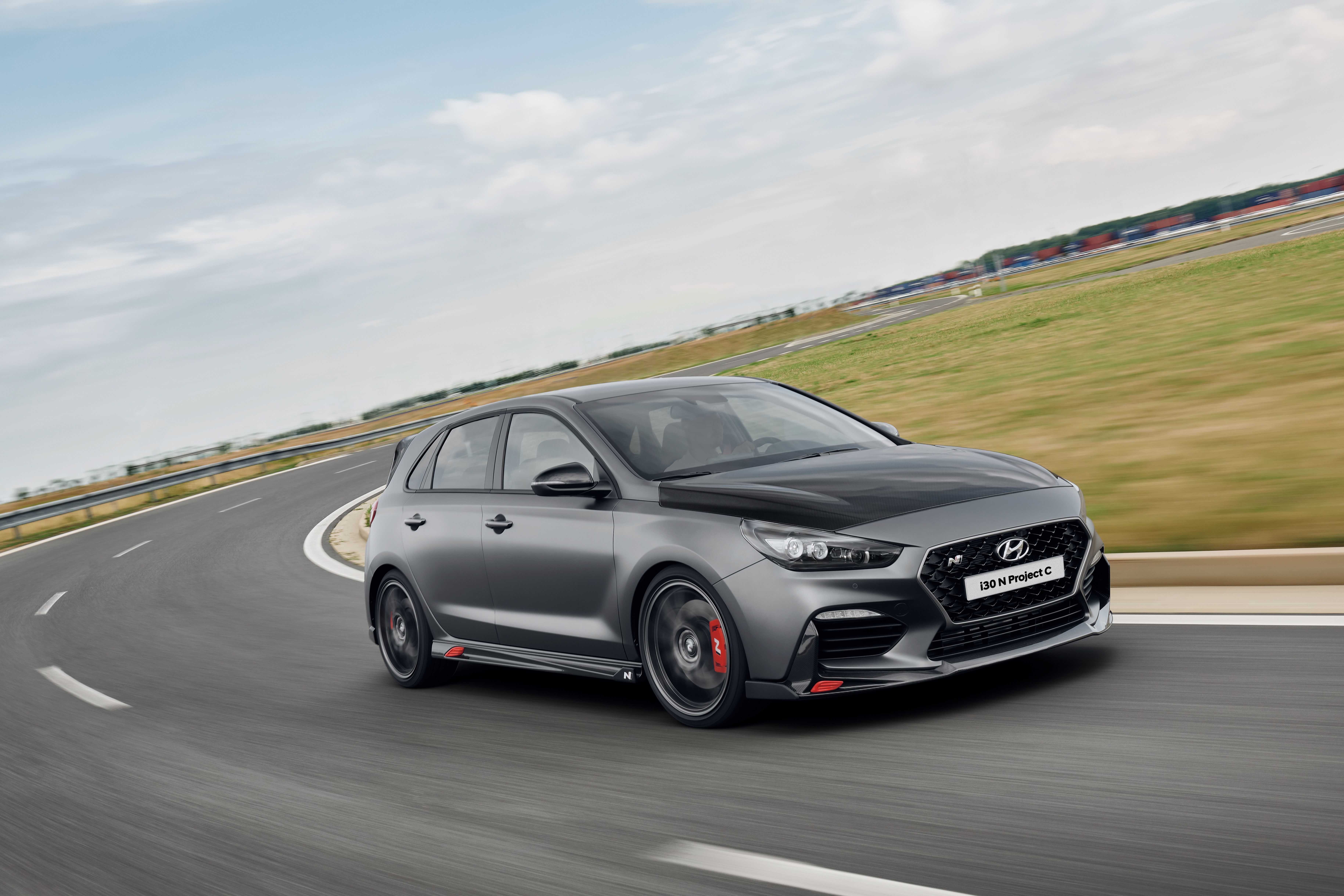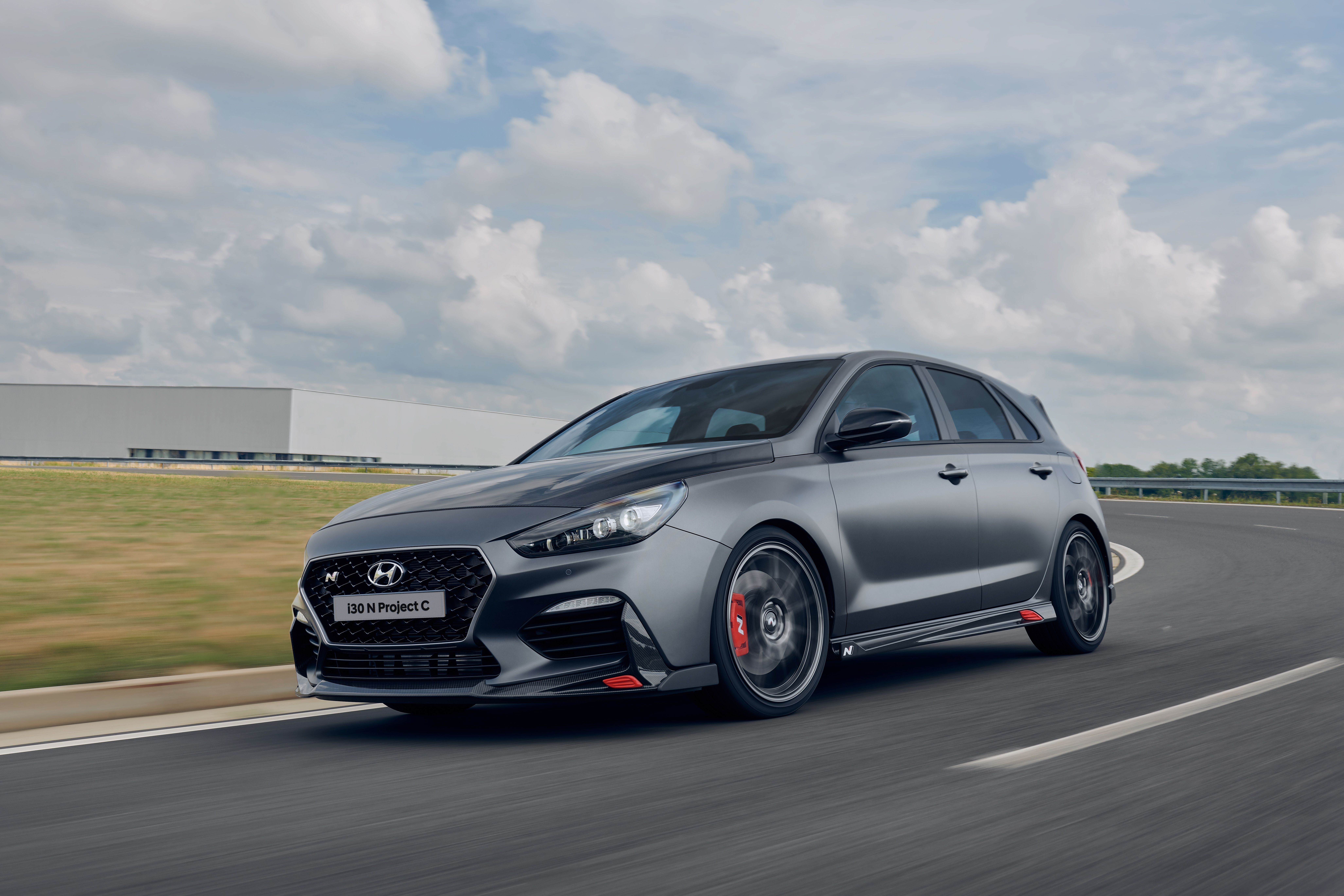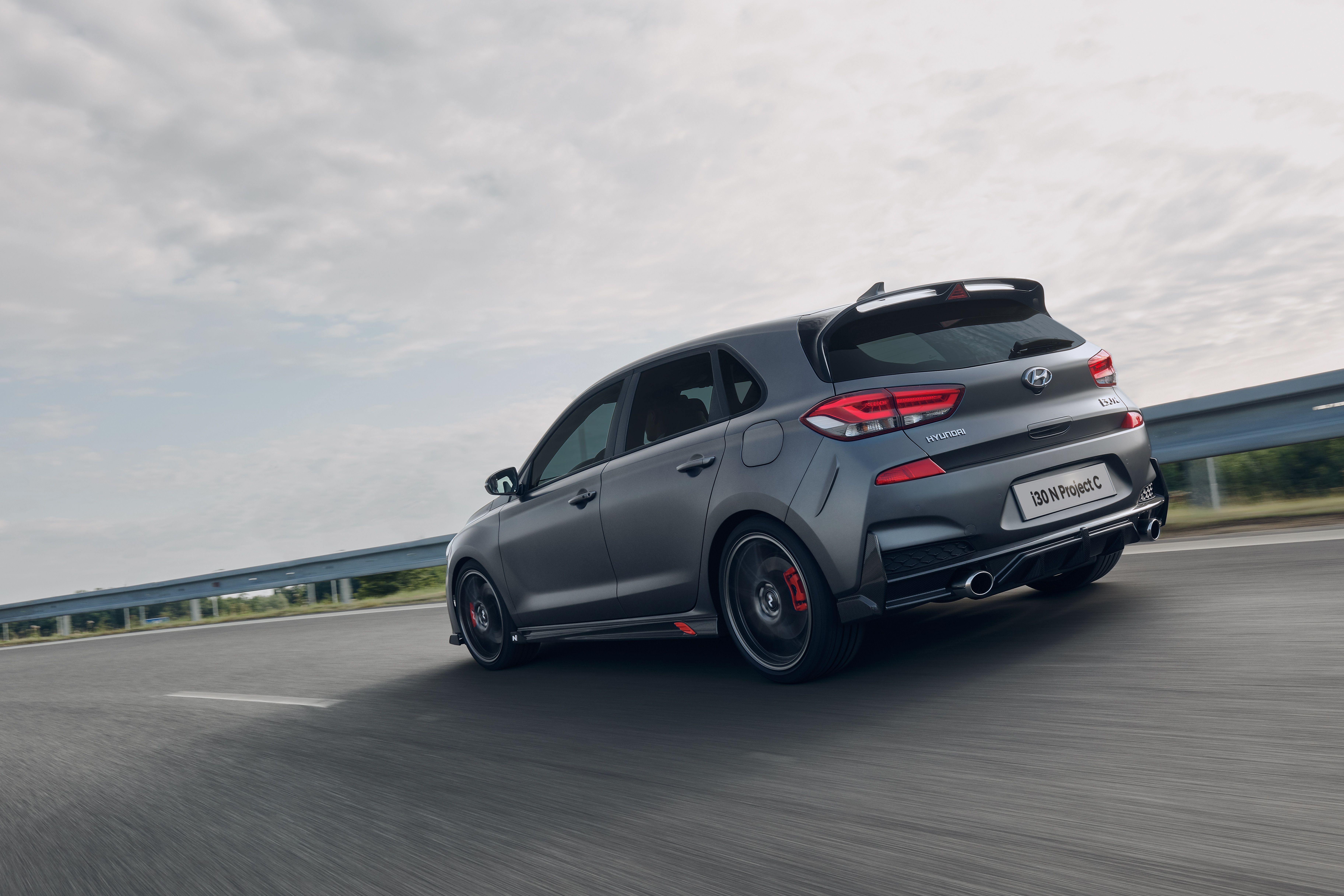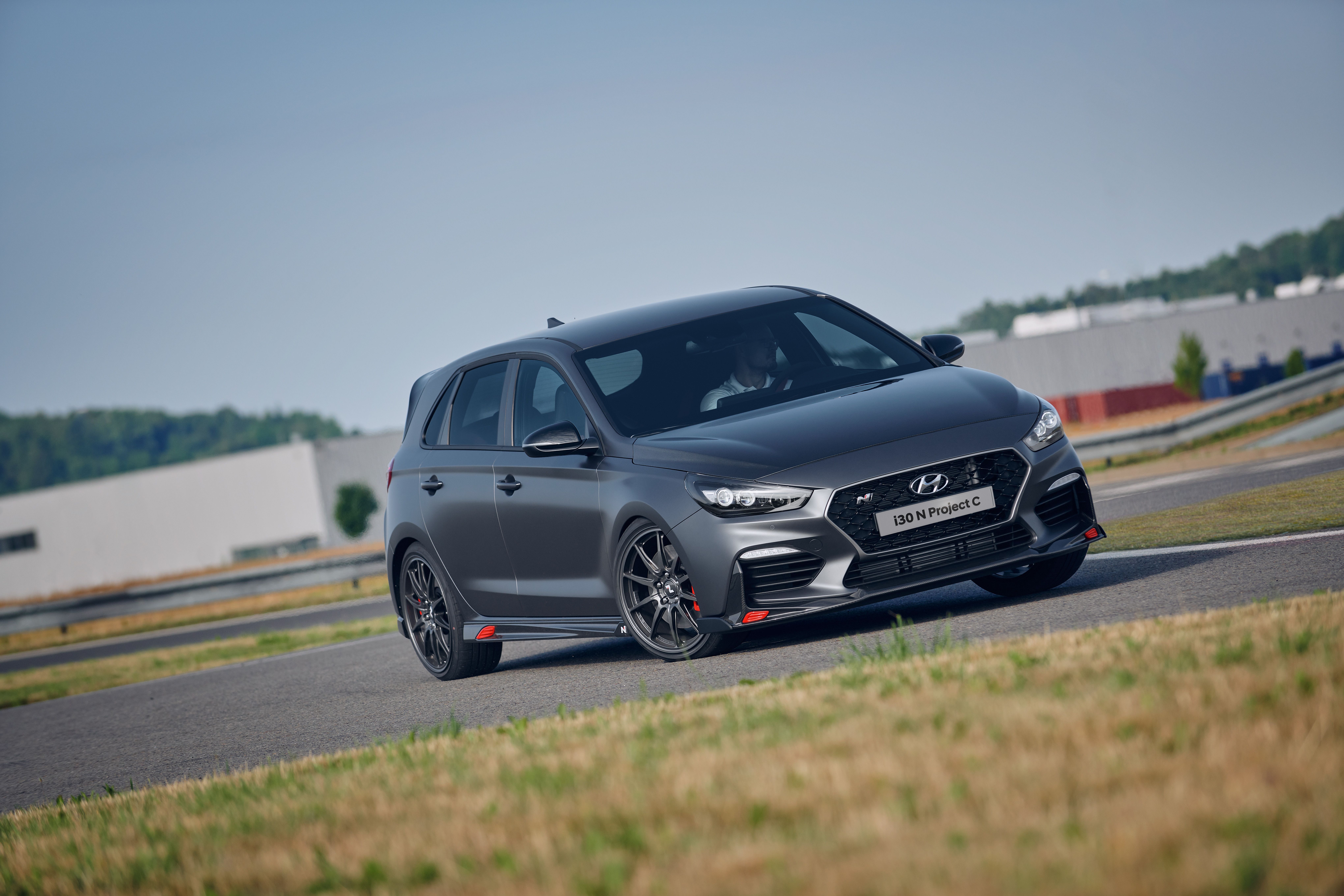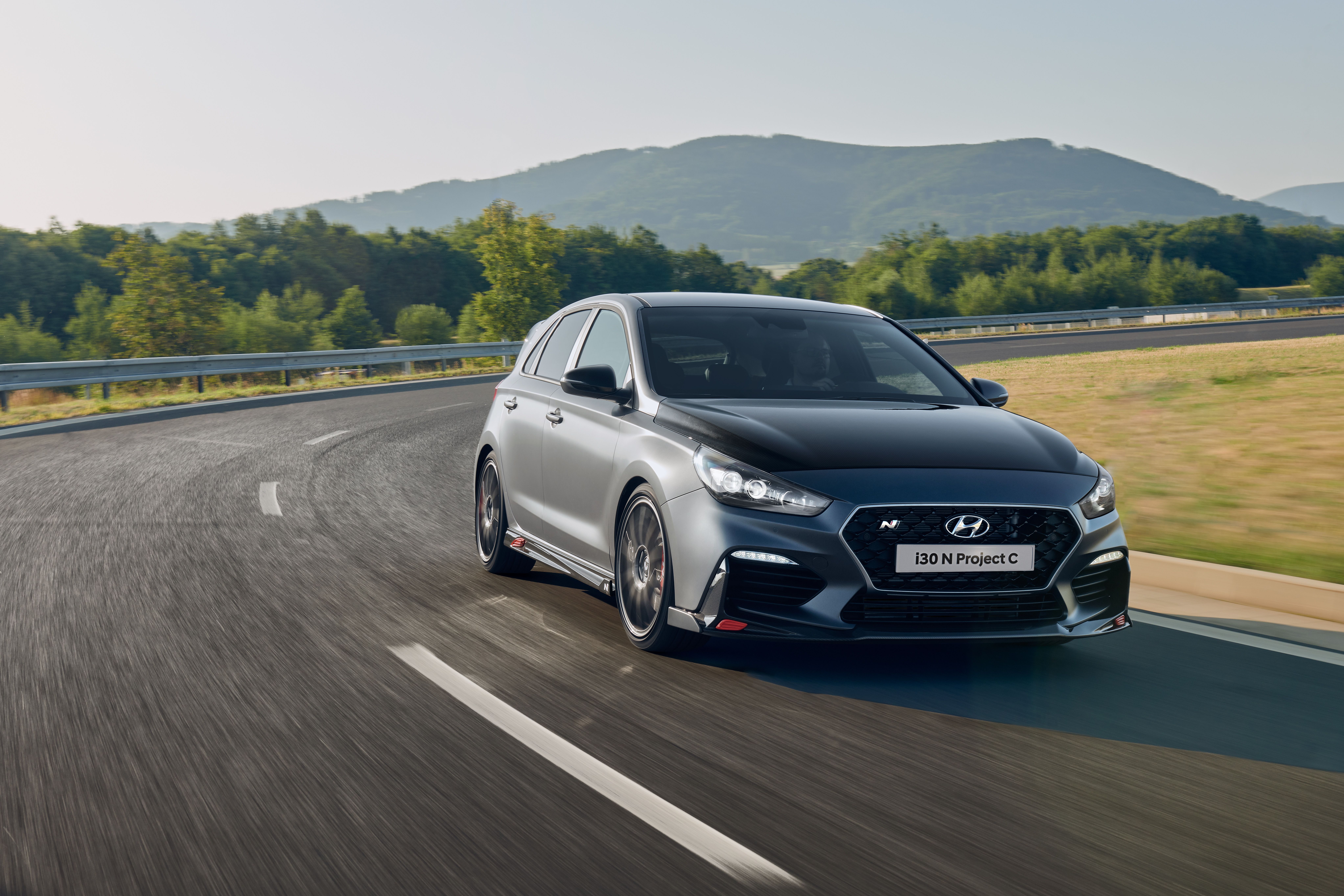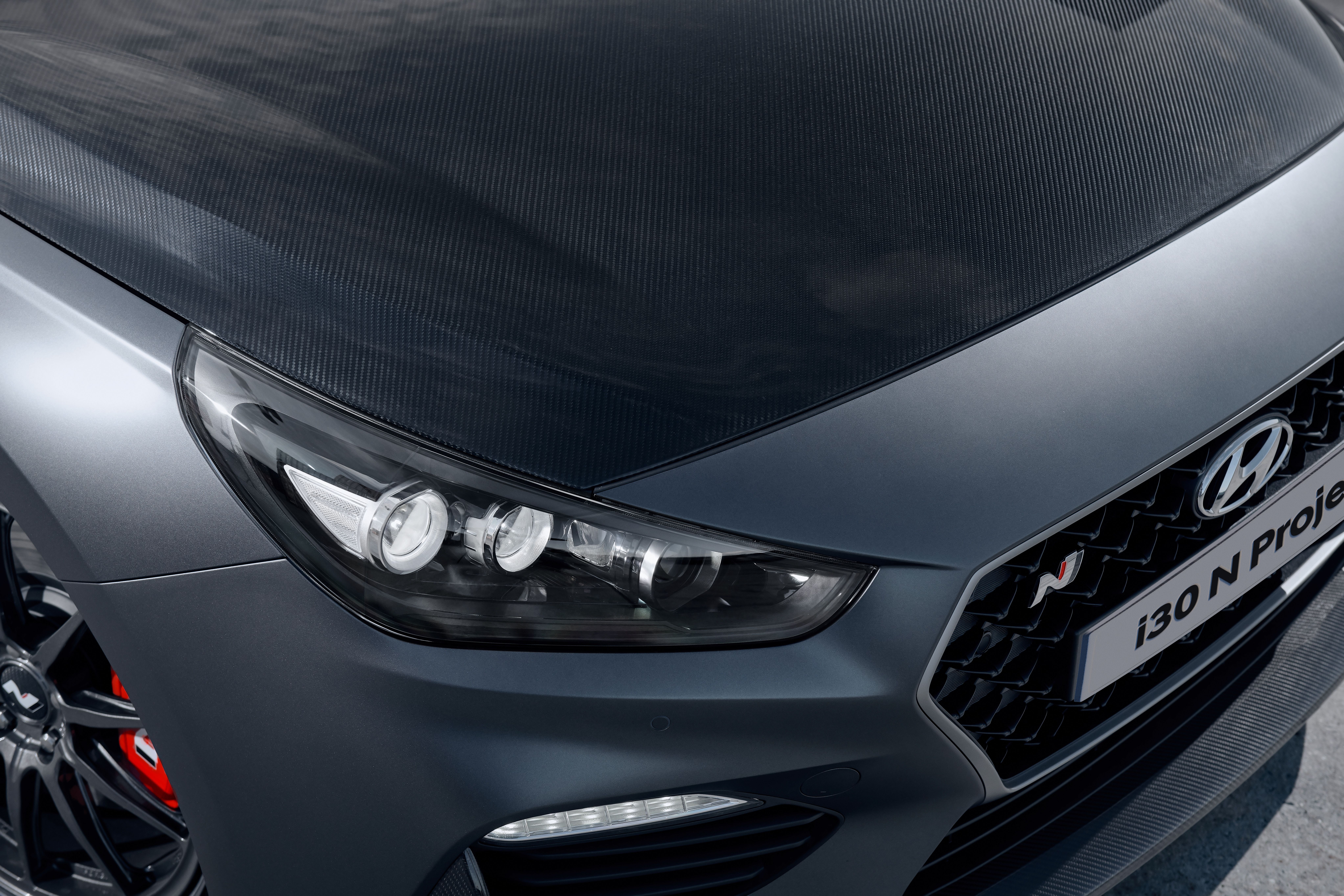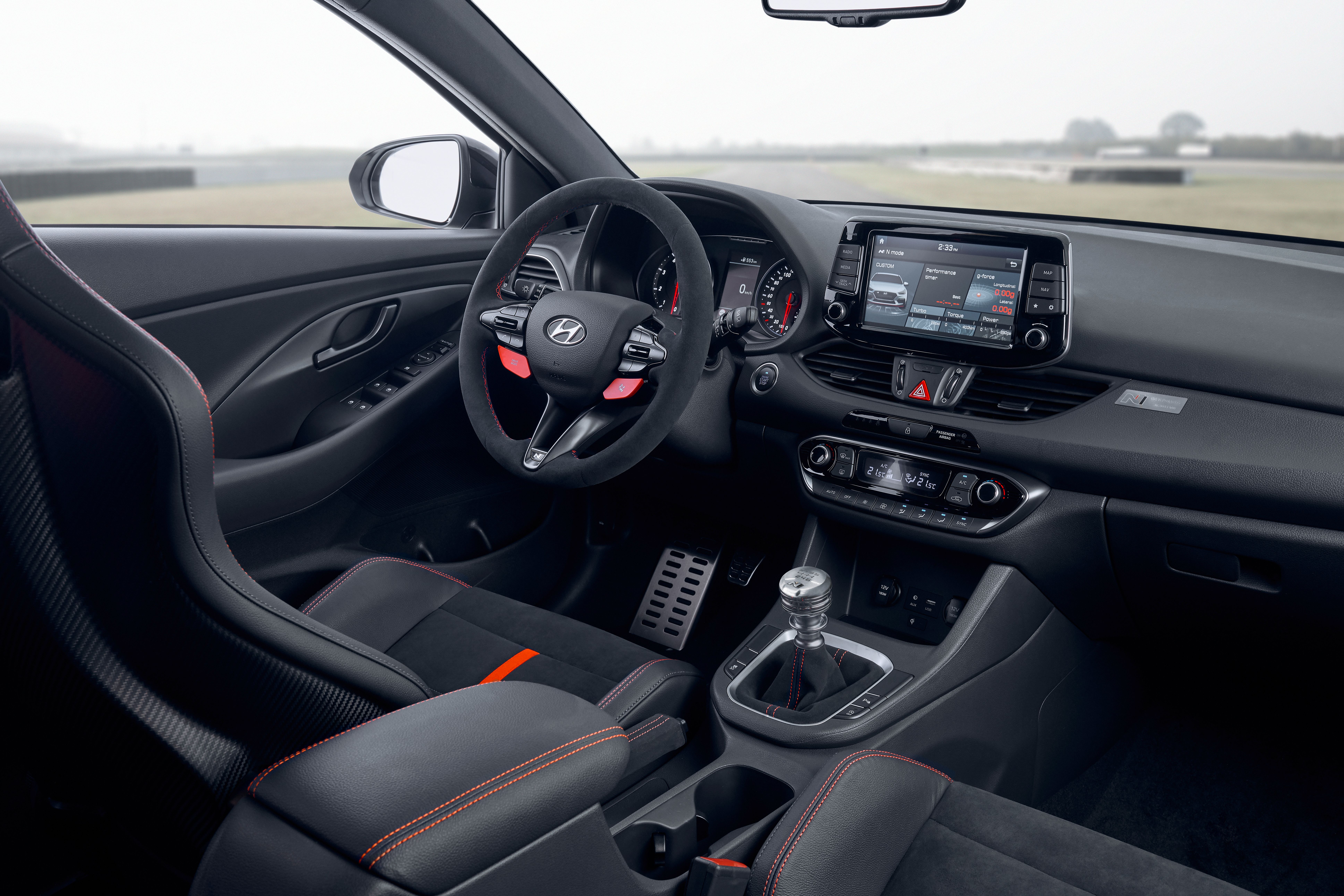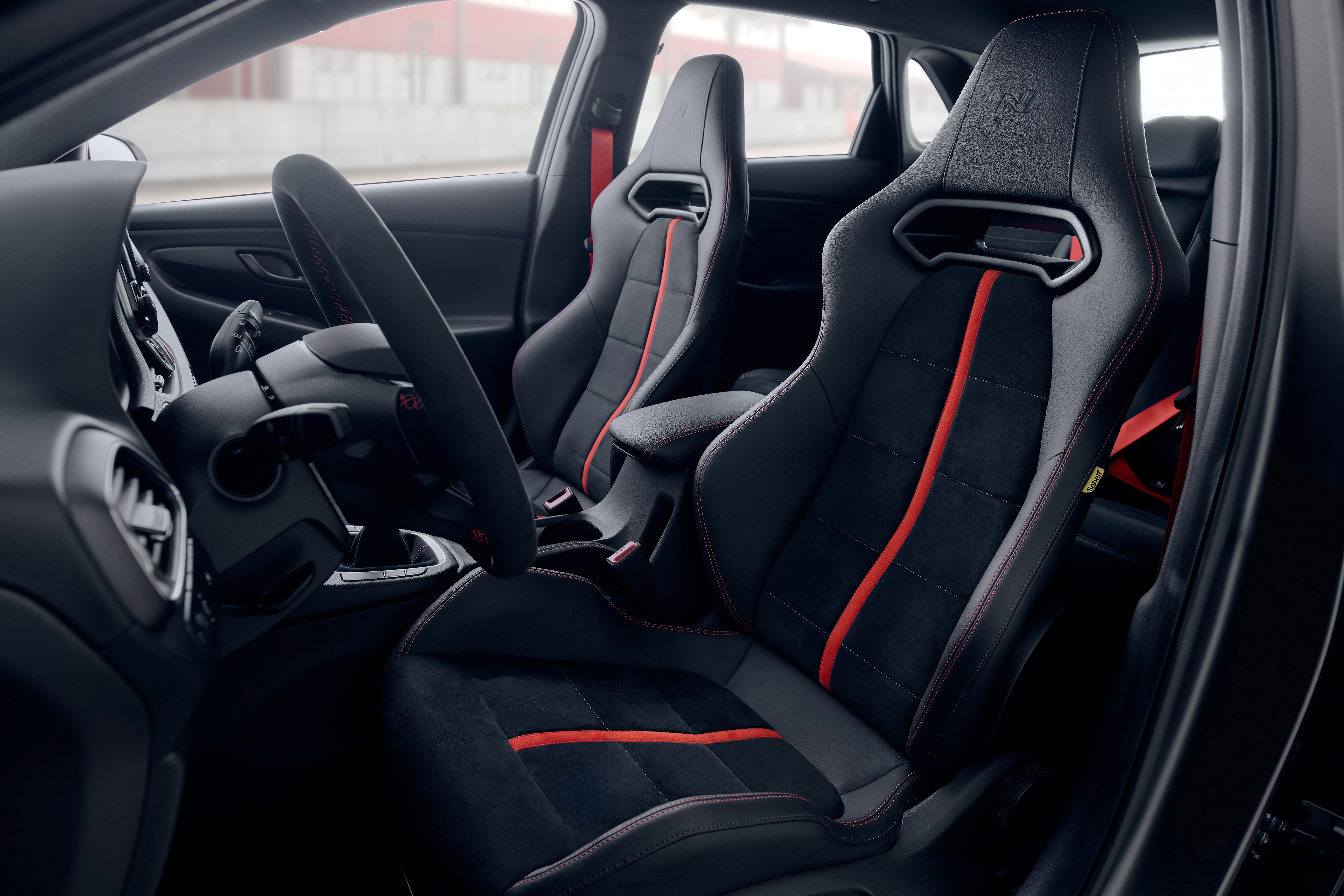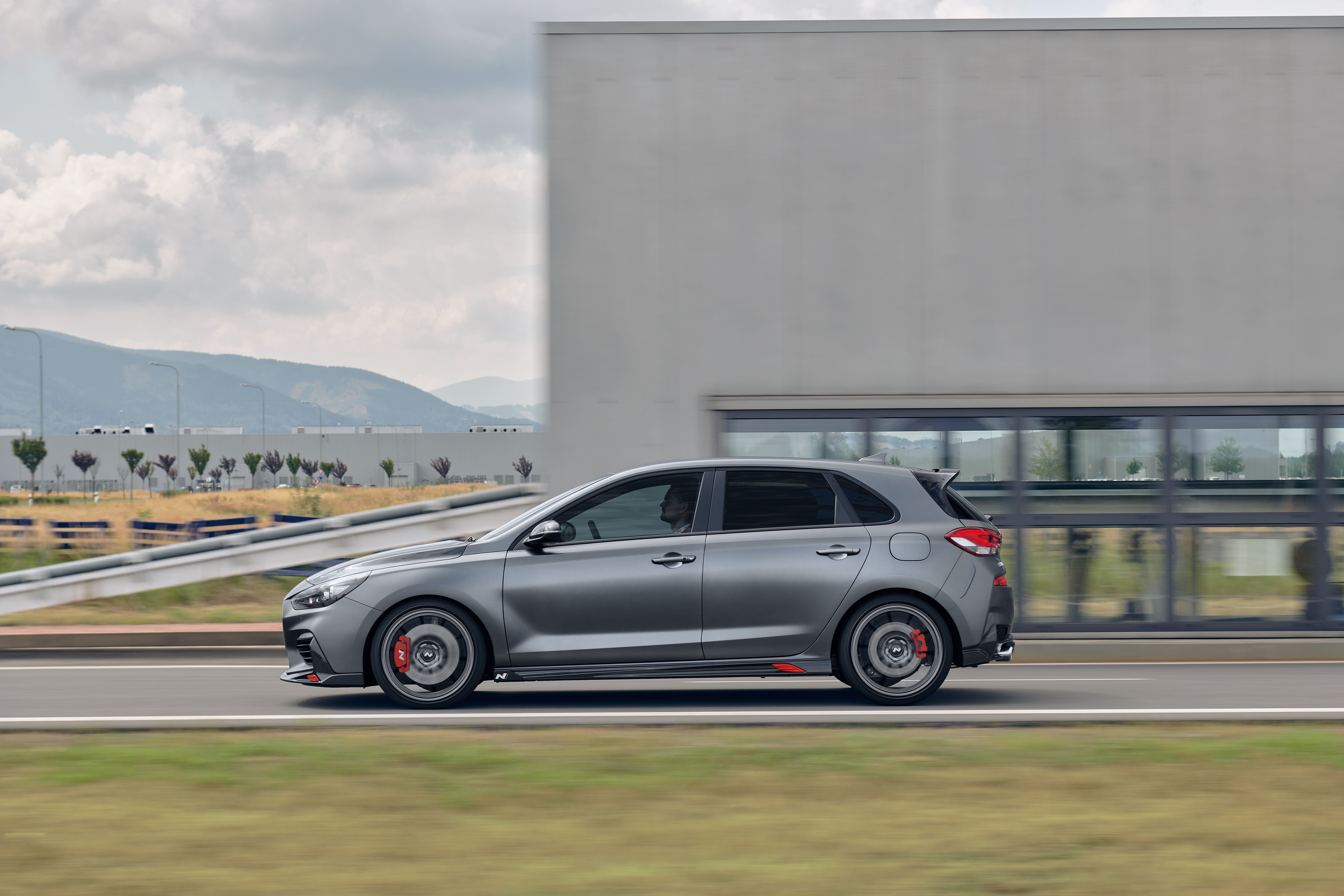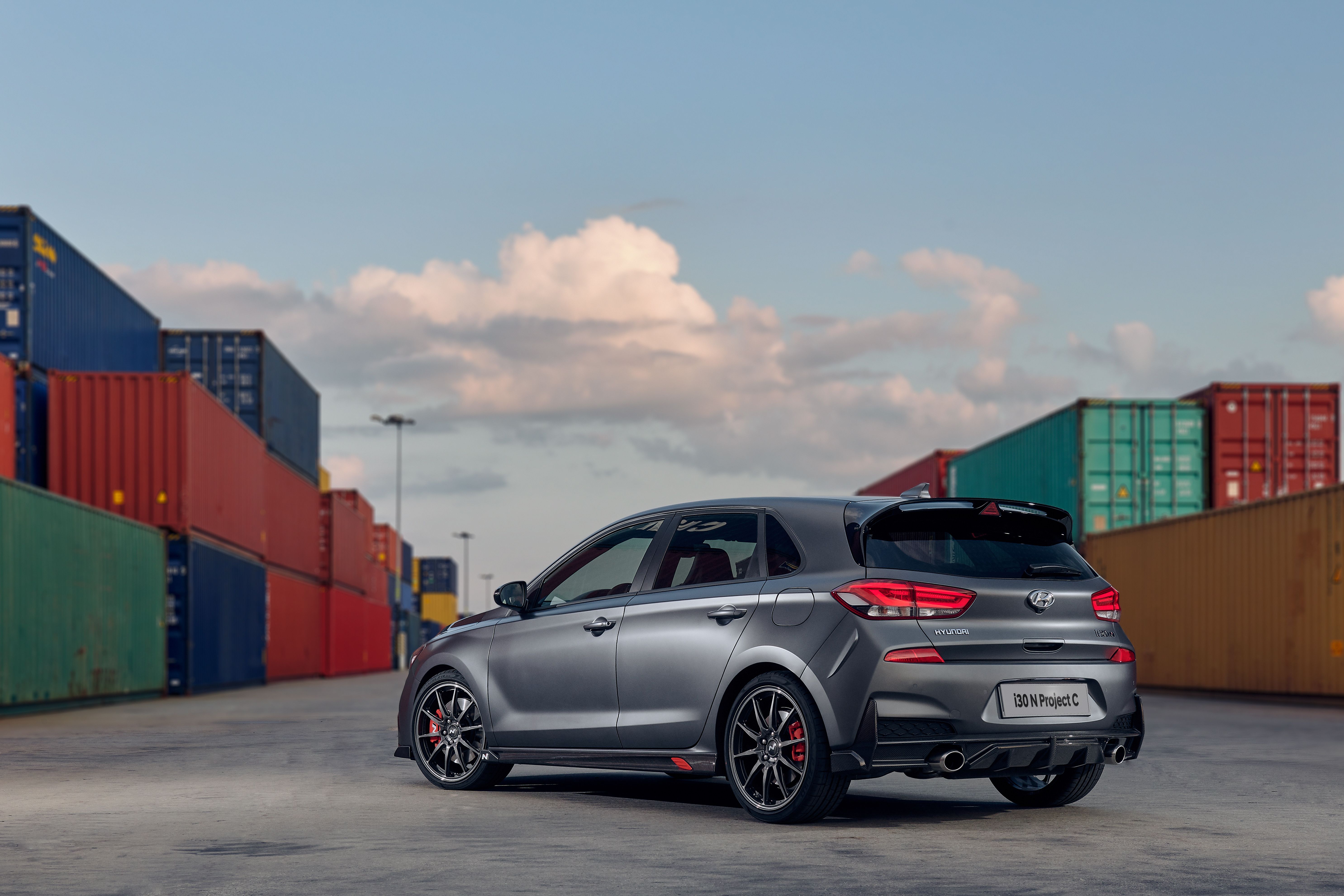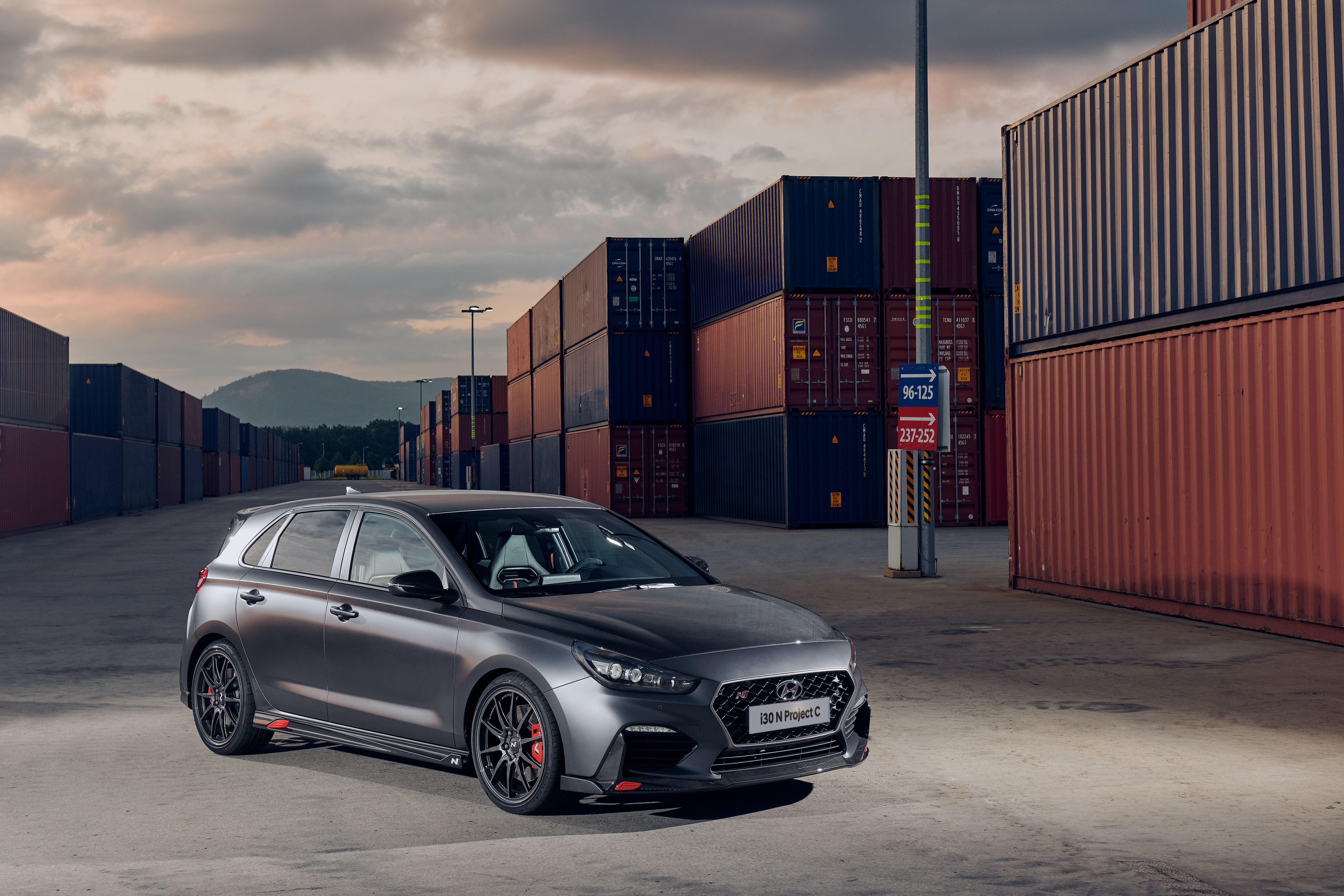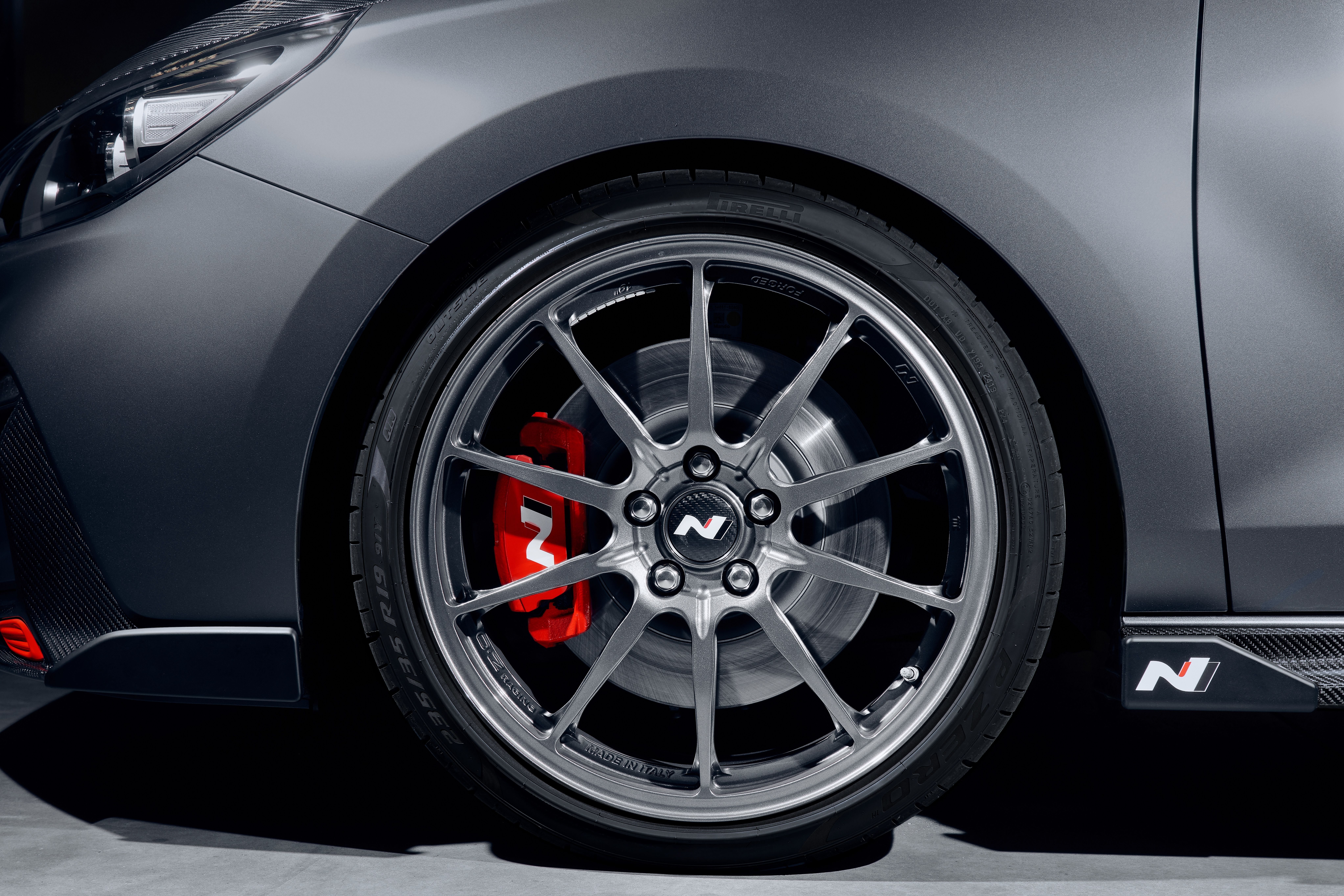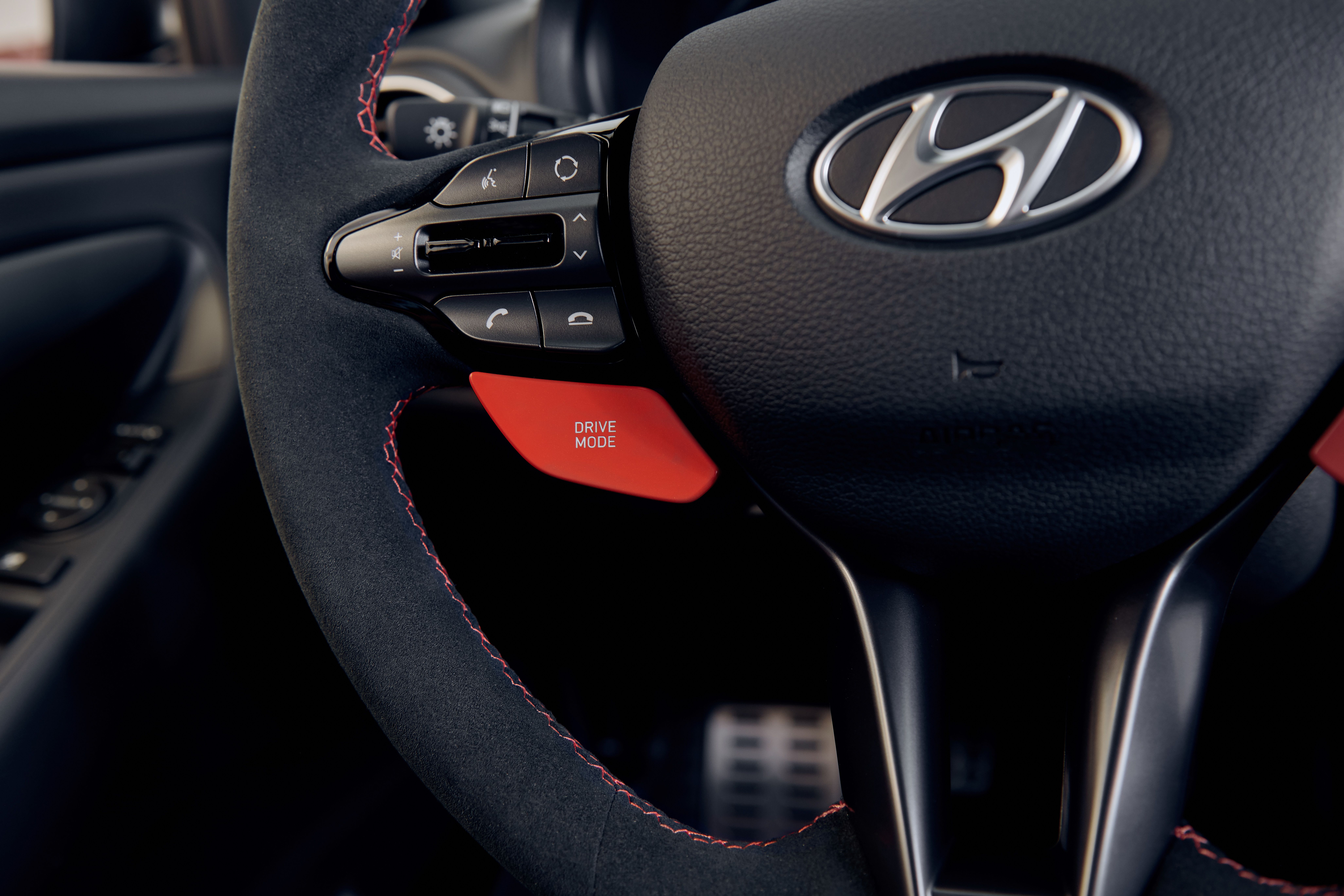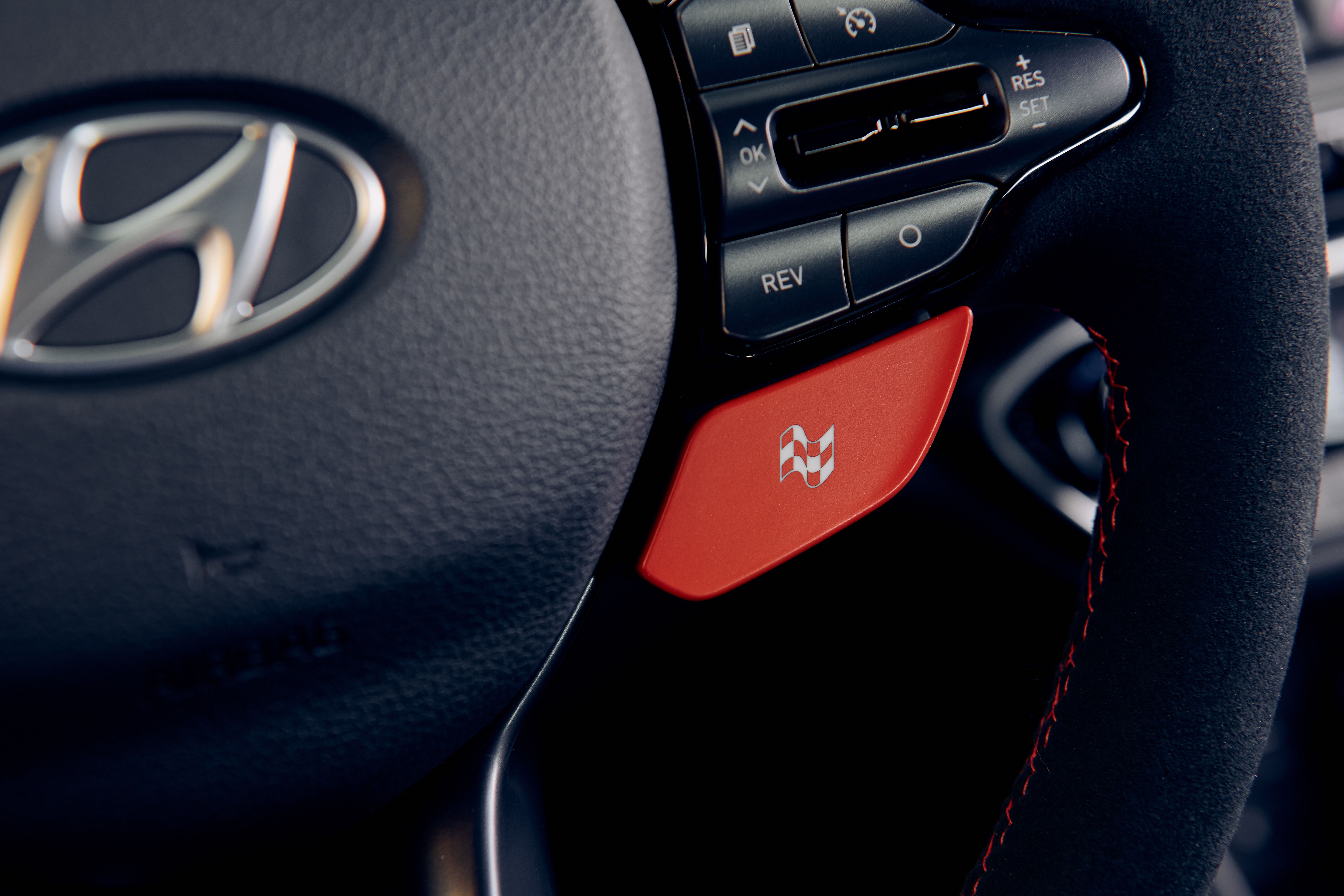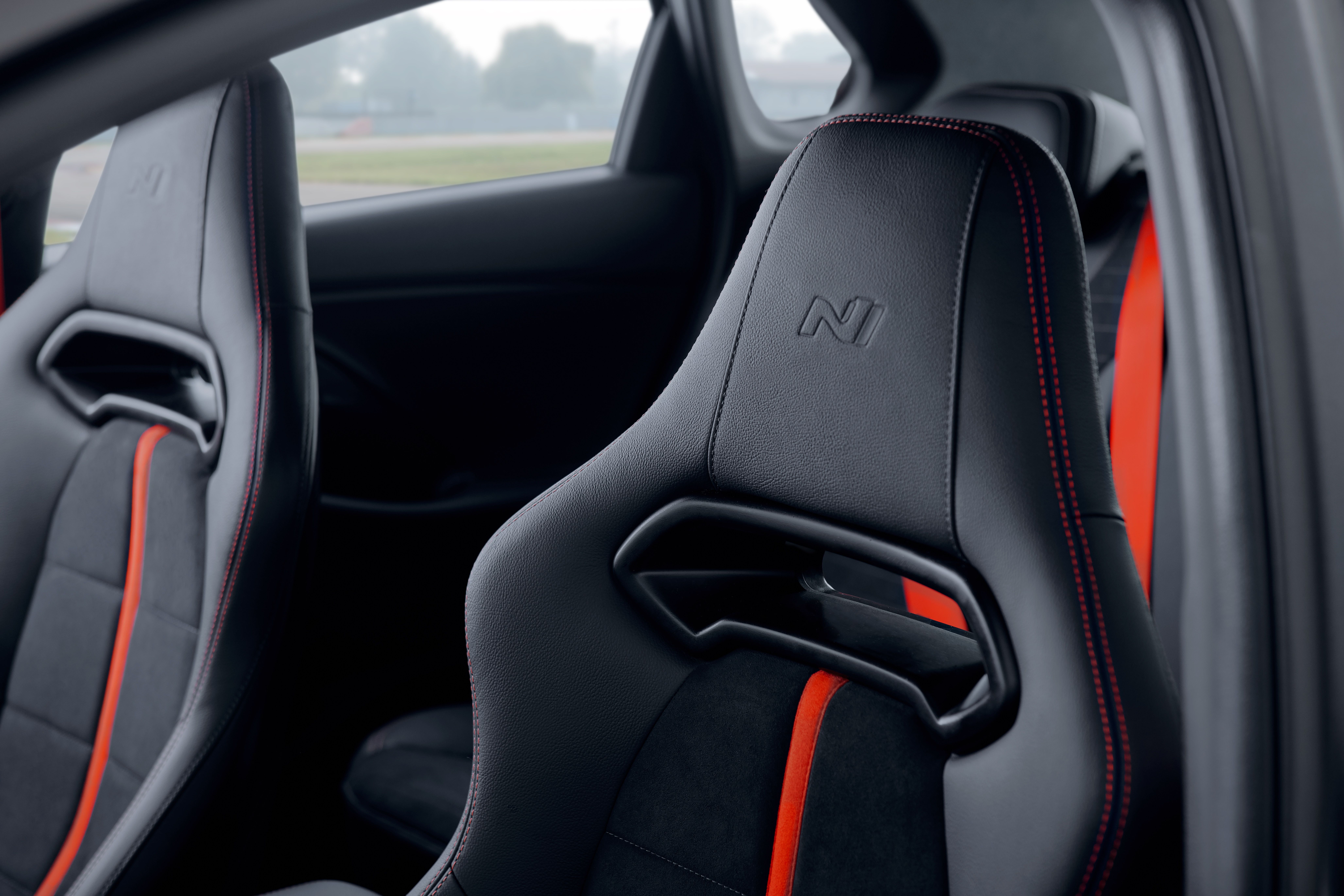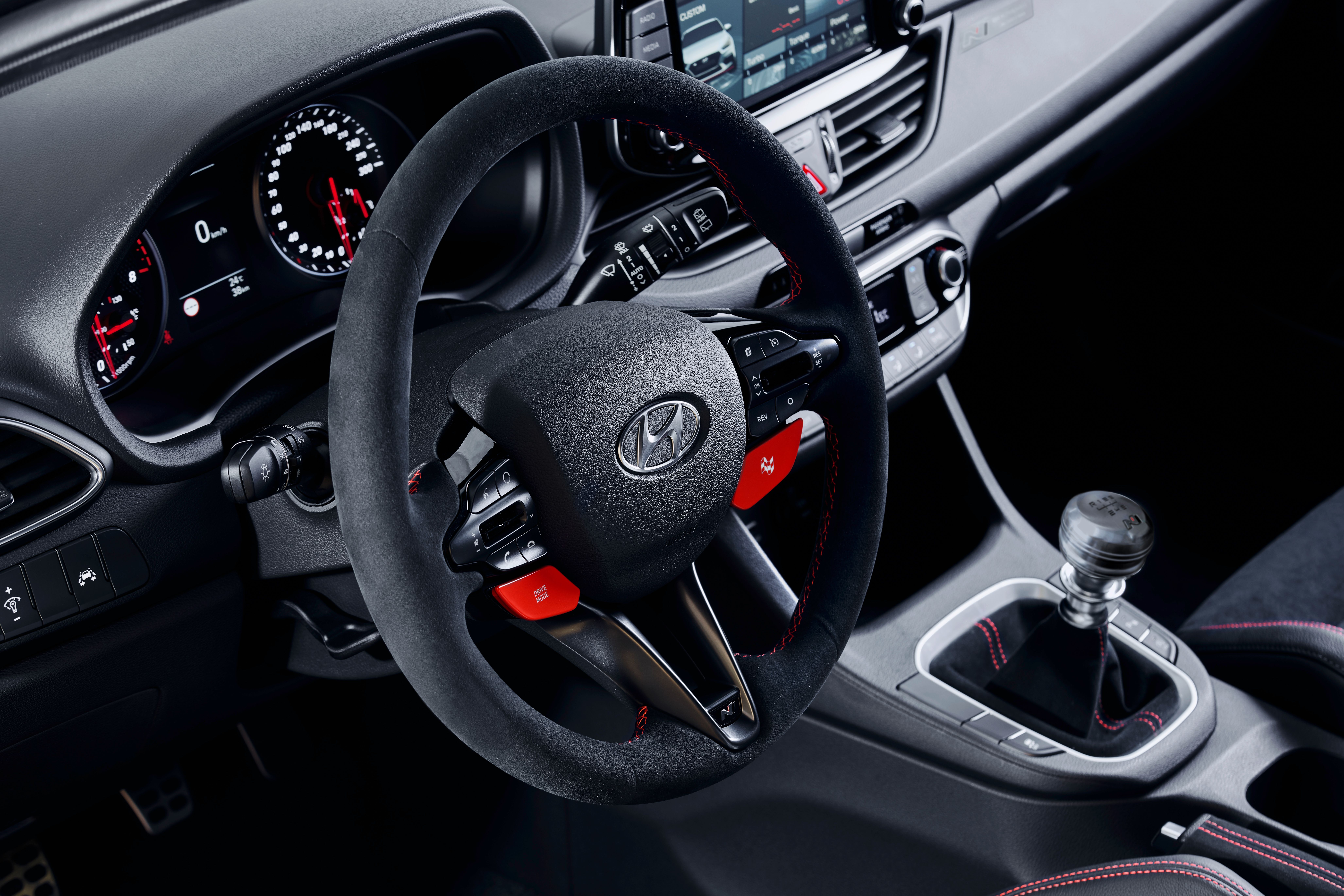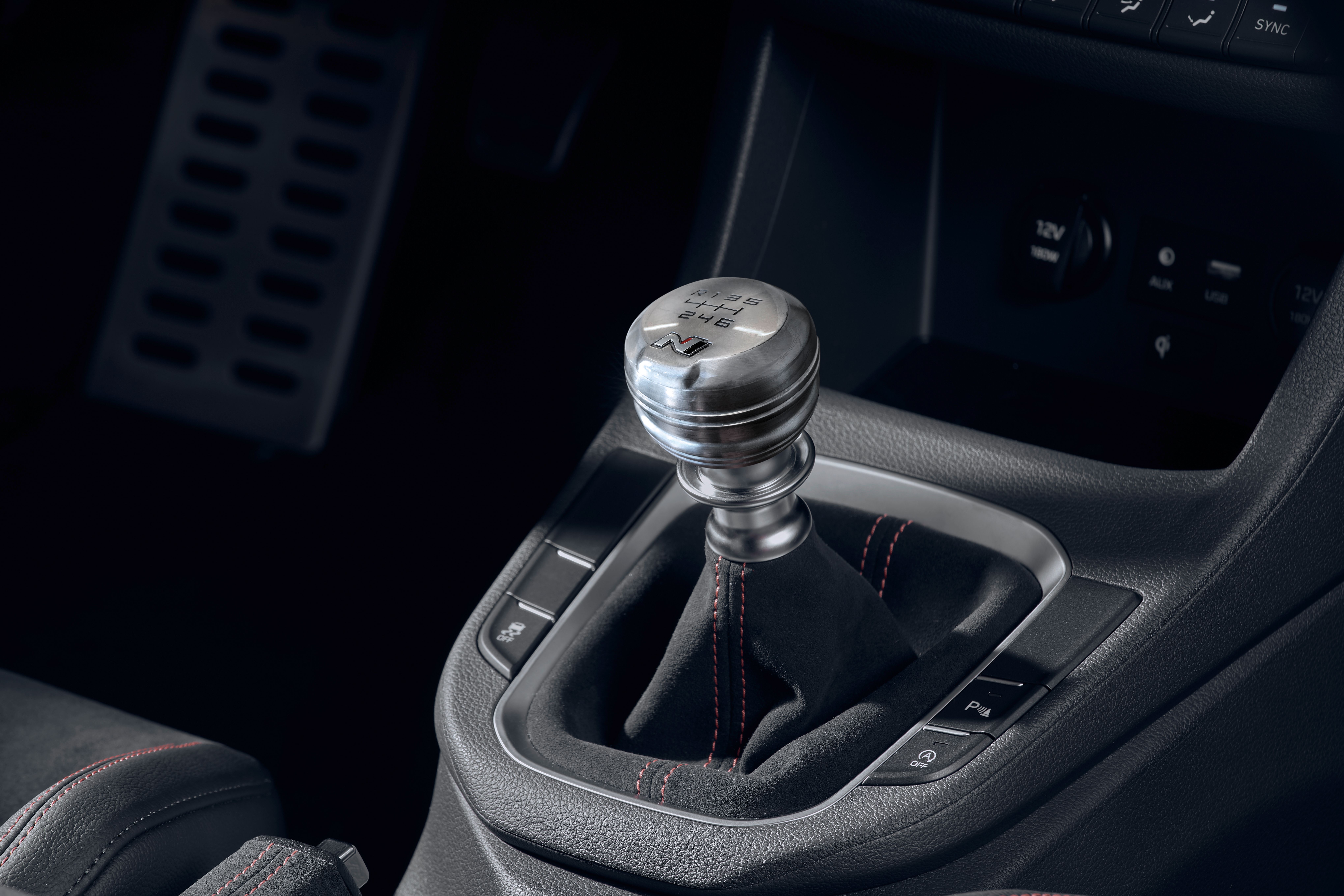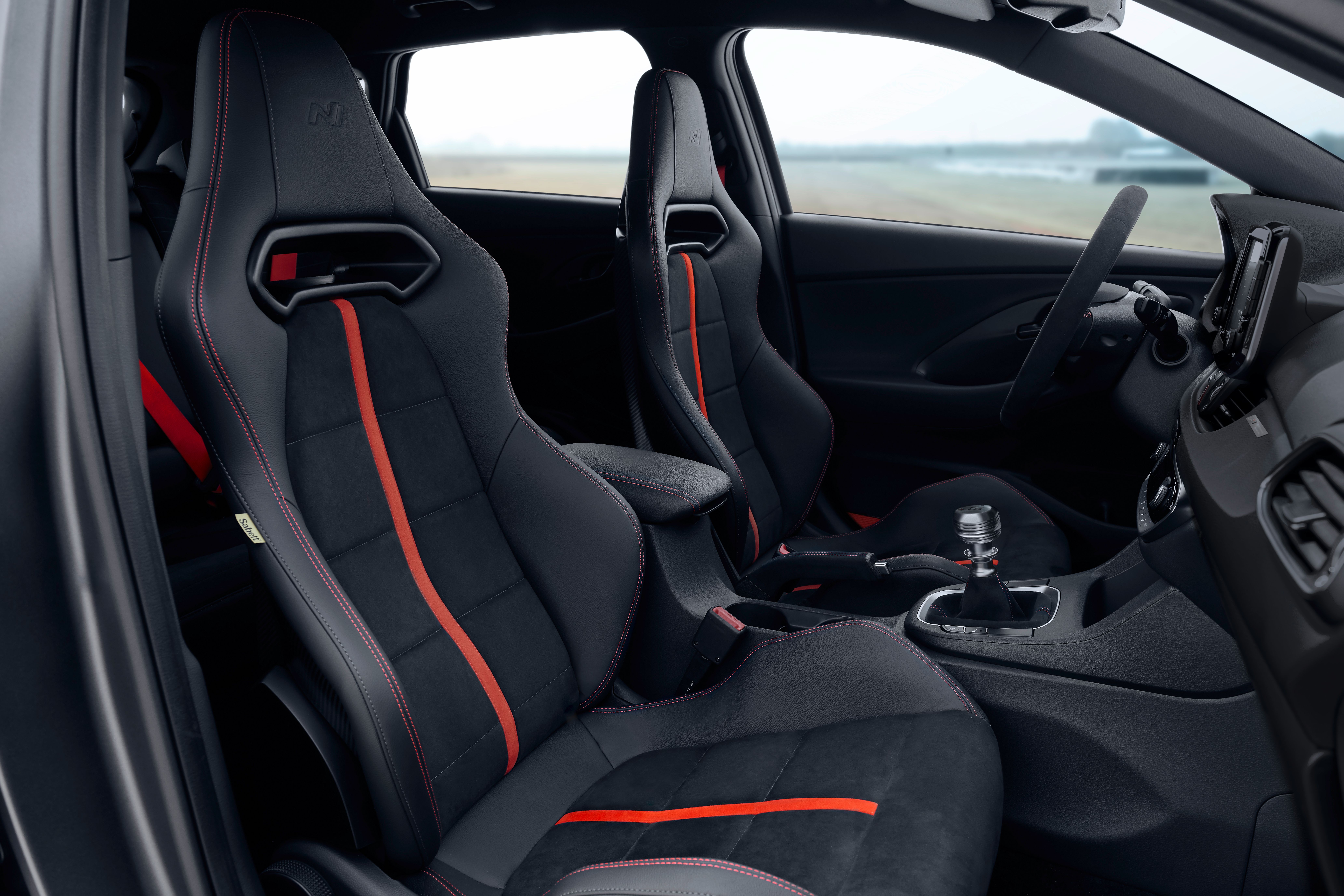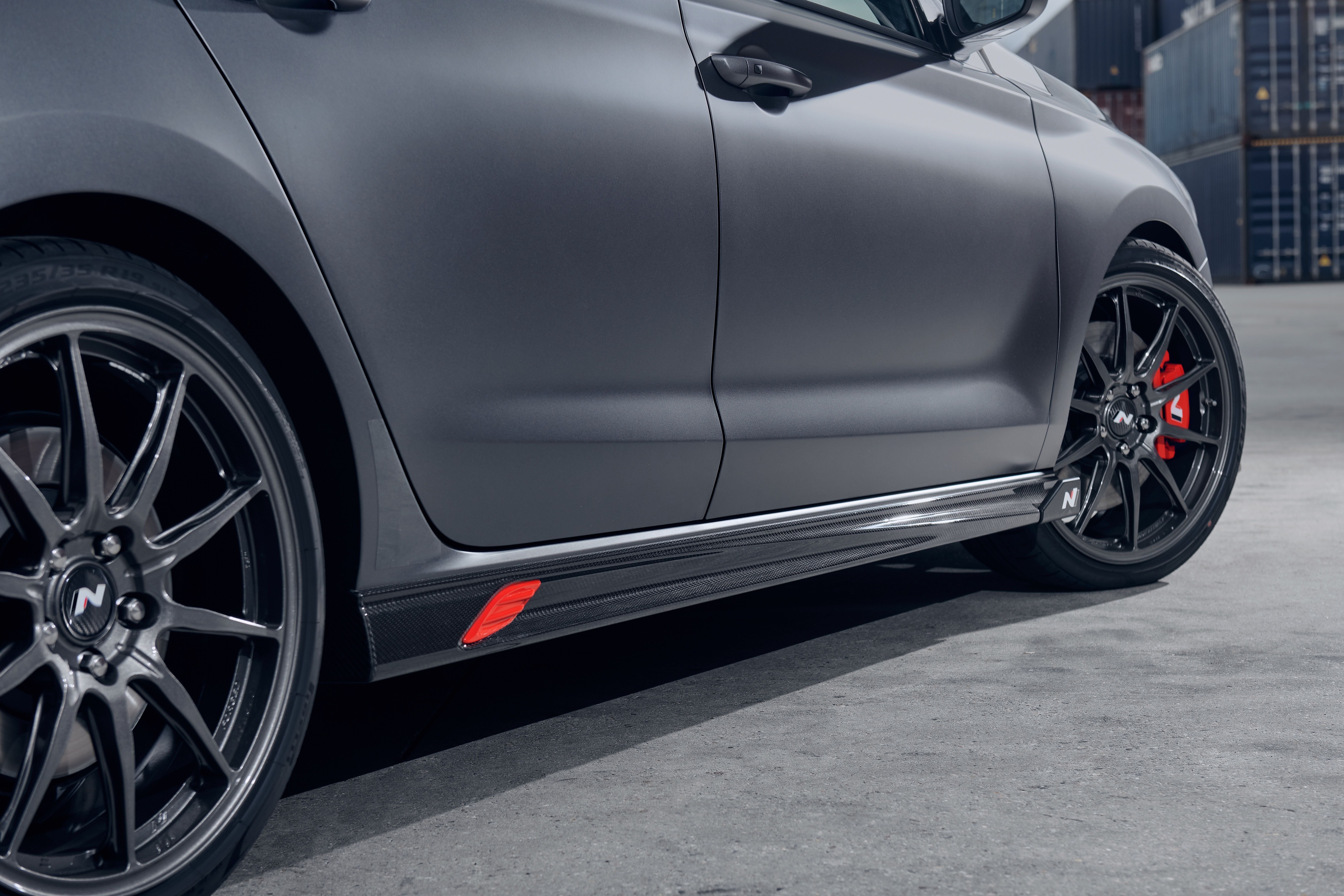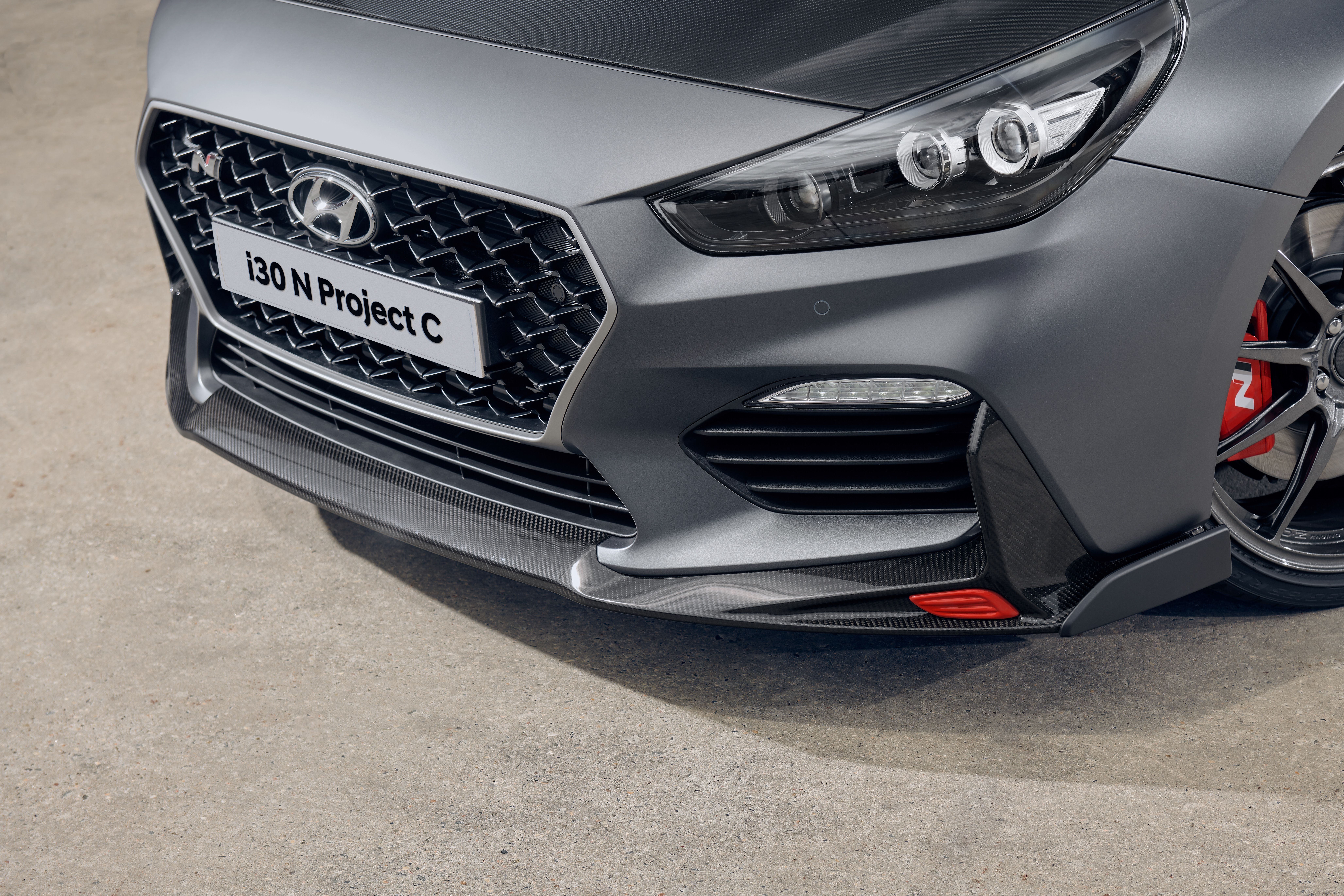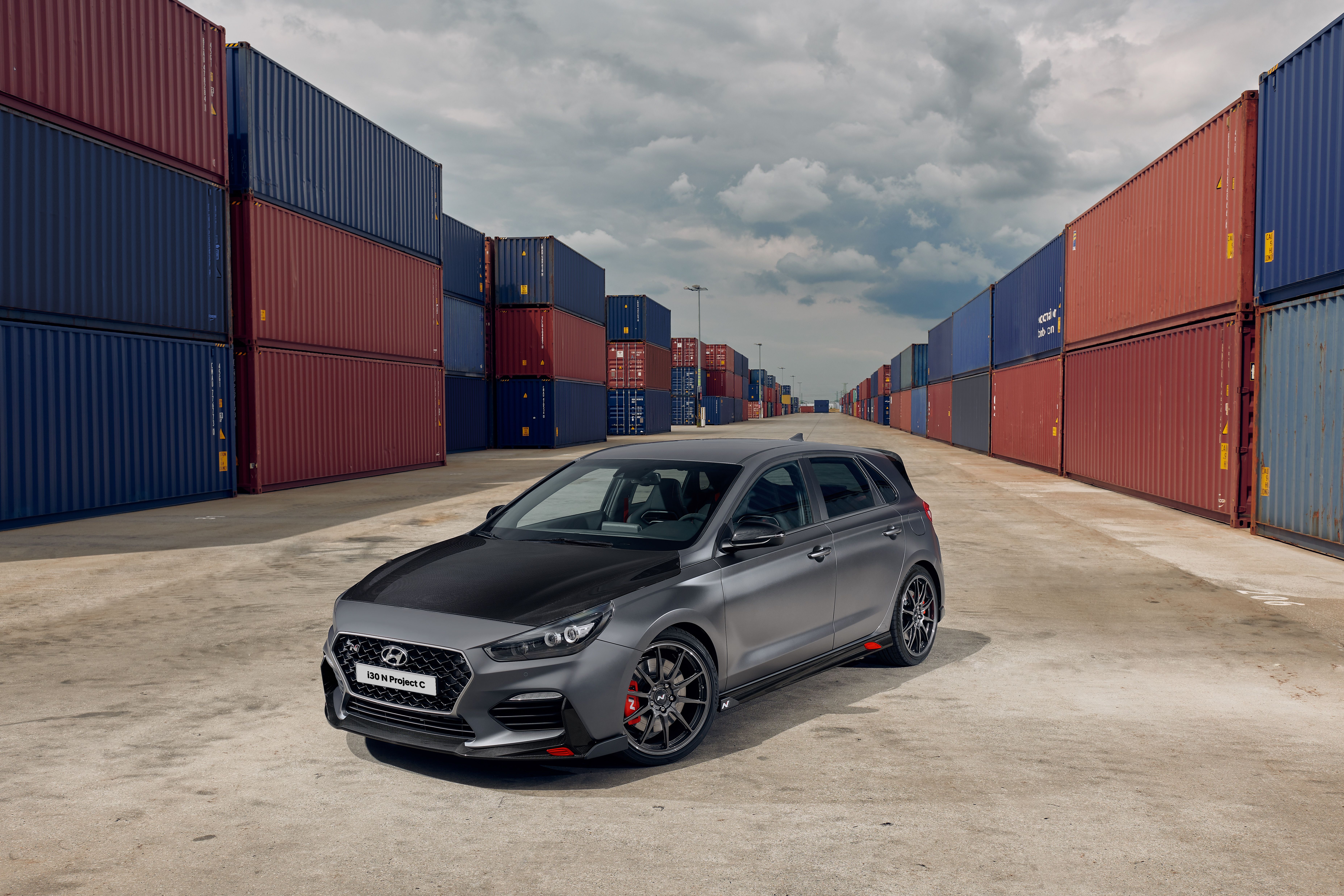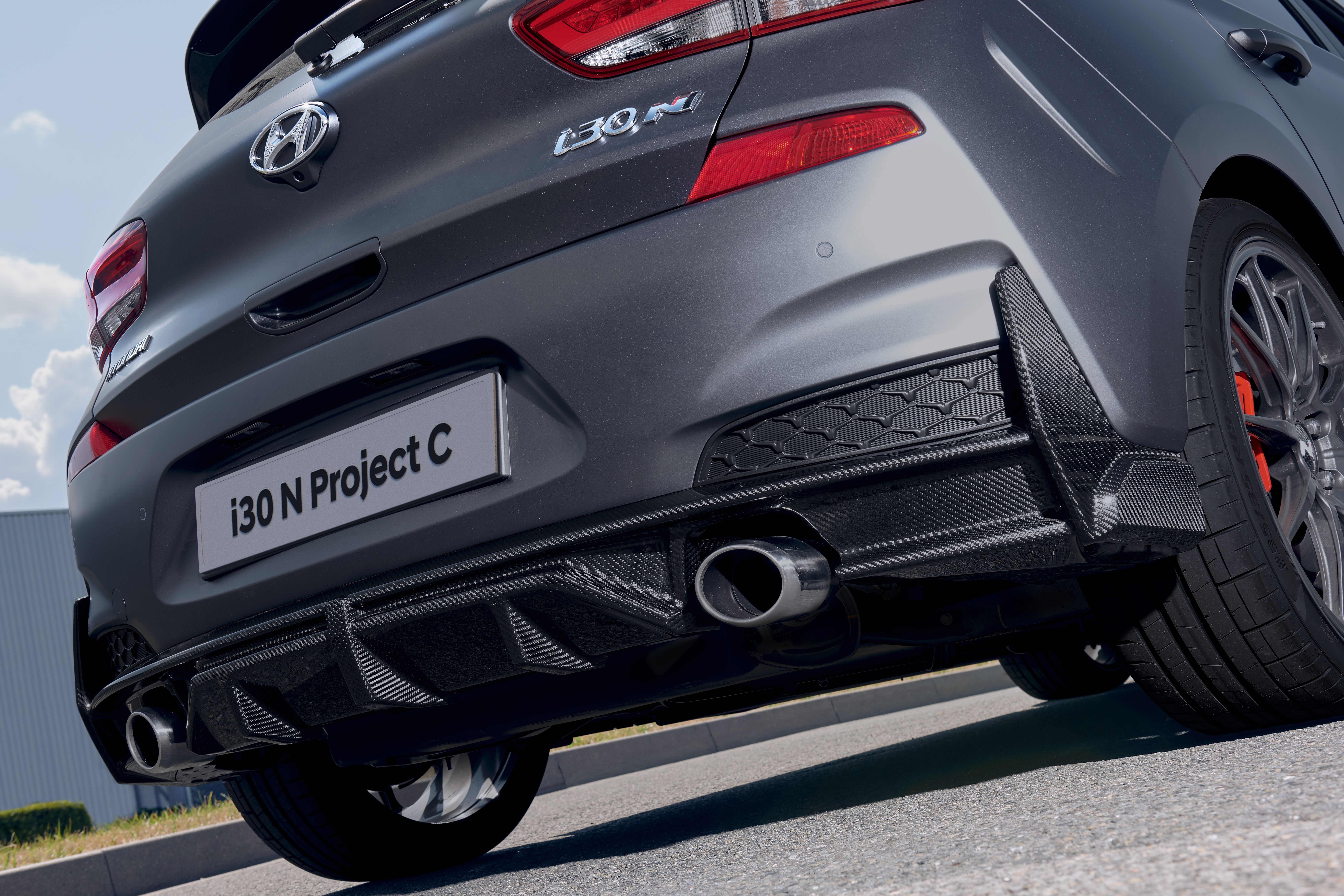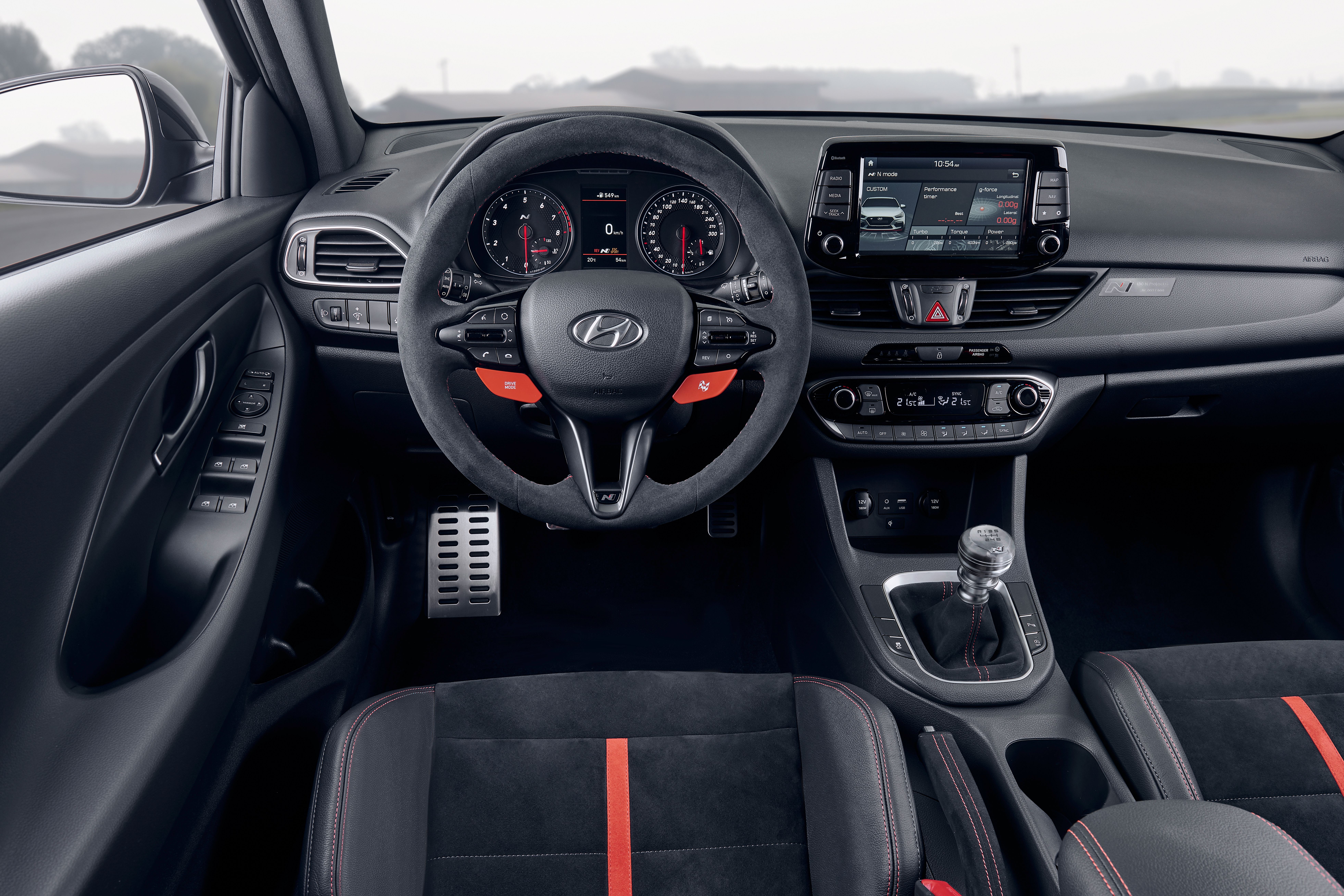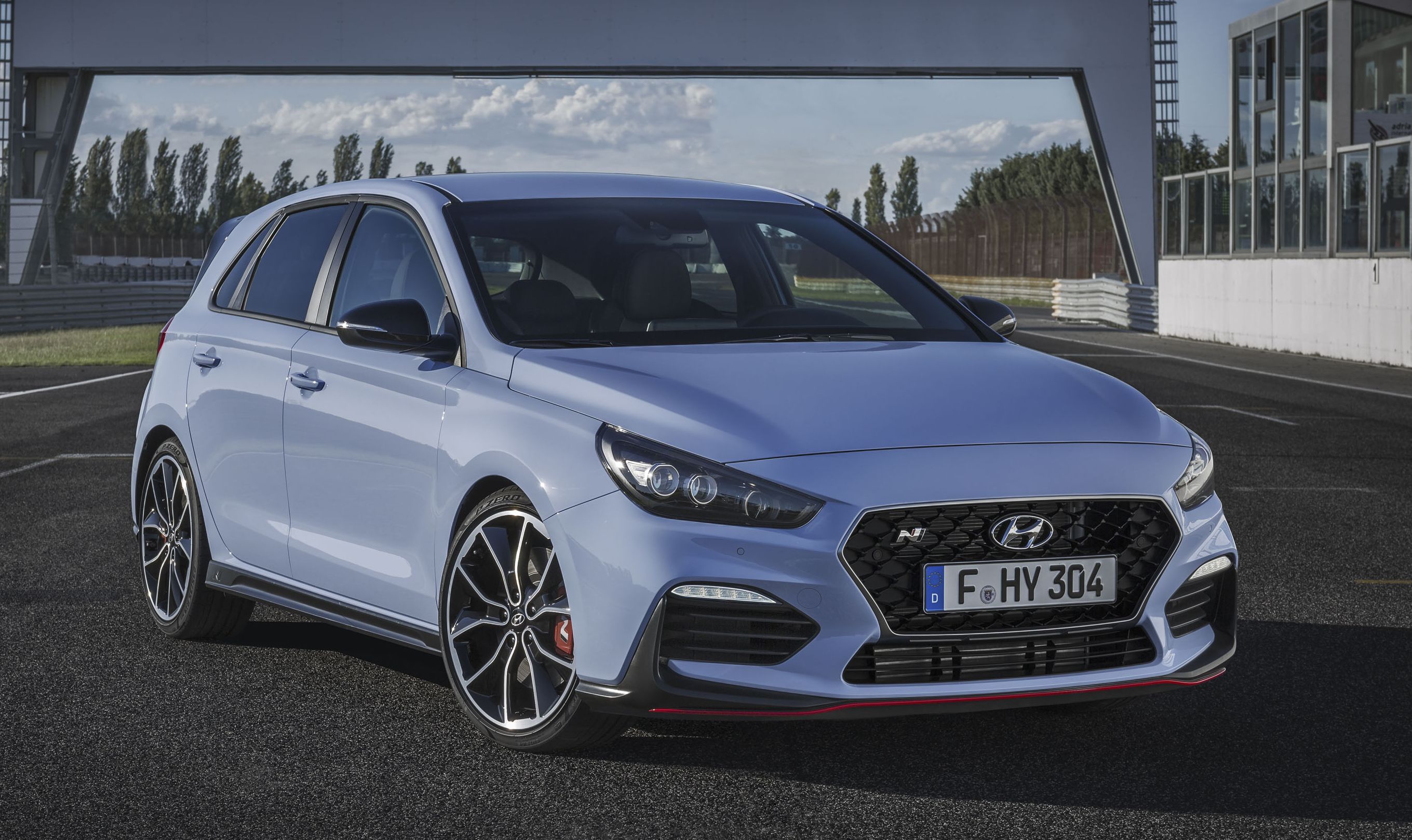The Hyundai i30 N was what we believed to be the best Hyundai could do with the i30 hatchback. After all, it was tuned and tweaked at the Nurburgring. But then, a year later, Hyundai showed up to the 2019 Frankfurt Auto Show with the i30 N Project C – a limited-production, euro-only i30N that’s more
2020 Hyundai i30 N Project C
- Make: Array
- Model: 2020 Hyundai i30 N Project C
- Engine/Motor: inline-4
- Horsepower: 271 @ 6000
- Torque: 260 @ 4700
- [do not use] Vehicle Model: Array
Hyundai i30N Project C Exterior Design
|
|
ids=861019,861020 |
no_overlay=false |
before_label=2020 Hyundai i30 N Project C |
after_label=2019 Hyundai i30 N> |
If you haven’t put two and two together yet, all of these fresh parts are made from carbon fiber reinforced plastic (CFRP.)
According to Hyundai, that makes the Project C better to drive and quicker than ever before. Never mind that fact that it looks downright stunning, to say the least. All told, the Project C weighs some 50 kgs (about 110 pounds) lighter.
Hyundai i30N Project C Interior Design
Hyundai said very little about the interior, but as you can see, there’s a decent amount of Alcantara scattered throughout the cabin, including on the steering wheel, handbrake, and manual shifter boot. Hyundai even went so far as to create a new shift knob that shares a likeness to a piston – how’s that for ingenuity?
Hyundai i30N Project C Drivetrain & Performance
It really feels like Hyundai dropped the ball here. Hyundai put so much work into refining the exterior and interior, making the i30 N lighter, and yet, that’s where it stopped. Under that lighter CFRP hood sits the same 2.0-liter T-GDI found in…. you guessed it….the Hyundai i30 N. This is the same tune configuration that comes with the i30 N Performance Pack, so it pumps out 275 PS (271 horsepower) and 353 nm (260 pound-feet of torque. Of course, with the over-boost function in place, the Project C actually delivers 378 nm of torque.
As for performance, well that remains to be seen, but Hyundai promises that the Project C is quicker and we have a tendency to believe its engineers. After all, the Project C is 110 pounds lighter than the car it’s based on, sits just a hair lower, has much lighter wheels (about 44-pounds lighter), and revised aerodynamics. The i30 N performance Package can get to 60 mph in 6.1 seconds, so we suspect the Project C can do it in 5.9 or 6.0 seconds flat. Furthermore, the lower center of gravity, revised suspension, and the new aerodynamics should compute to a car that handles better than ever.
After all, that’s what it was built for and tested at Hyundai’s Namyang R&D Center and the Nurburgring. Hyundai hasn’t given us any details in terms of performance times around either track, but you can bet it’s quicker than any other I30 that’s ever rolled off the production line.
2020 Hyundai i30 N Project C specifications
|
Engine |
THETA 2.0 T-GDI, 16-valve MLA, DOHC E-CVVT |
|---|---|
|
Capacity |
1998 cc |
|
Bore x stroke |
86.0 x 86.0 mm |
|
Compression ratio |
9.5 |
|
Power |
275 PS (202 kW) @ 6000 rpm |
|
Torque |
353 Nm @ 1450 ~ 4700 rpm 378 Nm with Overboost Function @ 1750-4200rpm |
|
Turbocharger boost pressure |
2.3 bar max |
|
Maximum speed (km/h) |
250 |
|
0-100 km/h (seconds) |
6.0 |
|
CO2 combined (g/km NEDC 2.0 target)* |
176* |
|
Fuel Consumption urban/extra urban/combined (l/100 km)* |
5.7/9.7/7.1 |
Final Thoughts
It appears as if Hyundai is trying to flex its muscles a bit but showing what it could do if it really wanted to. It almost feels like Hyundai is just toying with us a bit, though, as we always knew that the i30 N has more potential than what it was really offering. There’s no doubt that the Project C could be even better than it is as that 2.0-liter engine could easily be tuned to deliver more. This leaves me to wonder what Hyundai has up its sleeve next, beyond this limited-production model. Will there be a more powerful version of the i30 N coming to the states since this one is destined only for the Euro market? Or, is Hyundai just trying to keep attention on the i30 and i30N for now? I guess only time will tell.
Further reading
Read our full review on the 2018 Hyundai i30 N.
Read our full review on the 2019 Hyundai i30 N Fastback.

